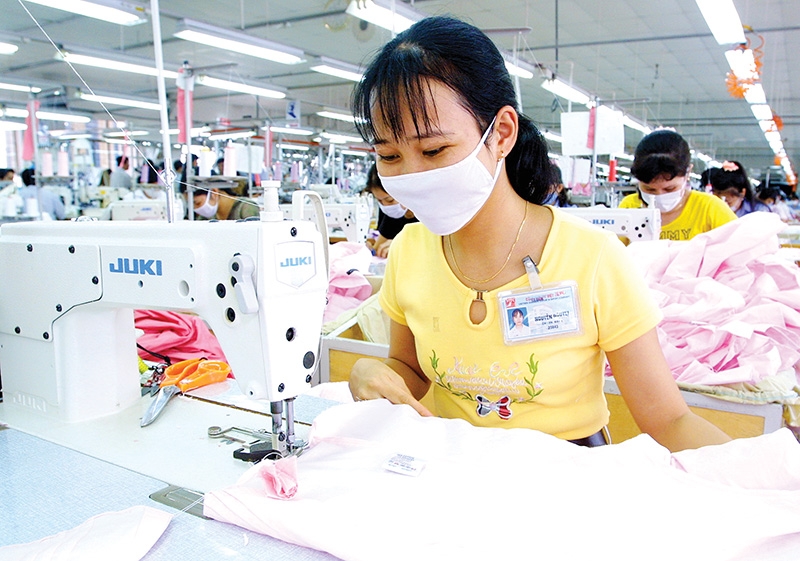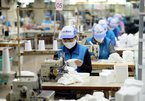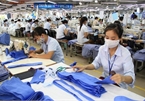 |
|
The next few weeks are key for textile groups as they await reopening of major markets such as Europe.
|
Pham Ly, a 38-year-old worker at a textile firm in the northern province of Thai Binh, expressed her dismay at having to adapt to layoffs, even as she only works three days a week at a factory that usually operates at full capacity at all times.
Ly is one of thousands of low-wage workers in textile and garments facing a tough time due to the current coronavirus emergency. These workers are also some of the most vulnerable at this time.
At an online conference last week, state-run Vietnam National Textile and Garment Group (Vinatex) informed that the entire textile and garment industry in the country may suffer losses of up to VND11 trillion ($478.26 million) if the COVID-19 pandemic ends in late May and the economy begins to recover from June.
Le Tien Truong, general director of Vinatex, said that its members had many orders cancelled since mid-March. “The bigger the brand, the more orders are cancelled,” said Truong.
He pointed out that in just the three days of March 16-18, a number of major customers from the United States and the European Union gave negative notices to domestic textile and garment producers. The majority requested extending delivery time to three or four months to wait for the market to recover.
Moreover, several orders of seasonal and business items in March and April were cancelled. The cancelled orders equal half the monthly production capacity of many businesses, and account for 3-3.5 per cent of the fully-year 2020 capacity of the garment and textile industry.
According to Pham Xuan Hong, chairman of the Association of Garments, Textiles, Embroidery and Knitting (AGTEK) in Ho Chi Minh City, foreign customers said they needed to stop receiving goods due to the rapid spread of the outbreak in the US and the EU, prompting governments to declare states of emergency and tighten border control.
“Partners in these markets have announced that they will stop receiving goods and suspended orders – even those that have completed production and are pending delivery,” Hong said. “This has knocked out nearly two-thirds of the textile and garment demand,” Hong added.
Anticipating losses
The suspensions followed an EU entry ban starting from March 17, with other countries applying anti-pandemic measures to cope with the coronavirus outbreak that has affected almost every country around the globe and is currently raging in Europe.
Although the ban does not apply to goods, the Vietnamese Ministry of Industry and Trade forecast that Vietnamese exports to the EU may decrease by 6-8 per cent over the first six months of 2020 if the epidemic lasts until June.
The EU is the second-largest export market of Vietnam with two-way trade turnover at $56.4 billion in 2019, with Vietnam’s export turnover to the EU making up more than $41 billion of this.
Nguyen Xuan Duong, general director of Hung Yen Garment Corporation, said that most businesses in the sector were already under pressure from supply chain disruptions as much of the raw material supply relies on China. They now face another enormous challenge as European and US retailers are suspending or cancelling supply orders due to the pandemic.
“In the first quarter of 2020, our revenue is estimated to decrease by 20 per cent,” said Duong, who admitted that he has not assessed the full damage as the situation is changing on a daily basis.
One of the country’s leading textile and garment makers Garment 10 Corporation is facing a continuously reducing number of purchases from its partners. Than Duc Viet, general director of Garment 10, said that about 40,000 manufactured shirts were rejected by South Korean partners and they cancelled orders for 39,000 products for April. In addition, many US partners are also calling a halt to orders.
“We are getting tired of receiving calls to cancel orders. If this spreads to all countries, the losses will be tremendous,” said Viet.
The labour-intensive textile and garment sector helped Vietnam earn $39 billion from exports in 2019, making it one of the world’s five biggest textile and garment producers and exporters.
The EU and the US were the two largest importers of Vietnamese textile products last year, holding 13 and 45 per cent of Vietnam’s export value, respectively, according to the General Department of Vietnam Customs. Half of the textile exports from Ho Chi Minh City head to the US.
Industry insiders point out that Vietnam’s textile and garment industry has survived both the Asian economic crisis in 1997 and the global financial crisis in 2008 but at those times, while the demand and delivery progress decreased, production was maintained.
In the current outbreak, delivery times are being delayed and orders are being cancelled, worrying all local players in the sector, even the big ones.
Urgent remedies
All agree that the top priority is to ensure jobs for employees, a tough ask for labour-intensive businesses like textile and garment ones.
Local makers are being urged to focus on finding solutions to minimise the need to reduce their labour force. In the immediate future, according to industry experts, enterprises should not increase working hours and allow employees to take two days off a week.
They also called for enterprises to be exempted from paying social insurance, health insurance, unemployment benefits, and trade union fees in 2020, in order to create cashflows to get their houses in order in the shortest order.
Specifically, at the online conference last week, representatives of the Vietnam Textile and Apparel Association proposed the Ministry of Labour, Invalids and Social Affairs to provide an exemption from all social insurance premiums until June; exemption from unemployment benefits premiums until the end of 2020; and authorising the use of unemployment benefit funds to pay 50 per cent of the minimum wage for under-employed workers.
In light of the complicated developments in the virus outbreak, on March 18 the Vietnam General Confederation of Labour (VGCL) issued Official Letter No.245/TLD regarding delays in payment of trade union fees for enterprises encountering encountering difficulties due to the outbreak. In particular, the VGCL has given permission to delay payments of trade union fees during the first half of 2020. The delay is available for enterprises where at least half of the workforce are subject to social insurance contribution but must temporarily suspend working.
Vietnam’s textile and garment industry currently boasts about 6,800 enterprises with 2.8 million employees. The output of the industry is about $45 billion, with the domestic consumption accounting for only about $5 billion, while the rest is exported.
According to Deputy Minister of Industry and Trade Tran Quoc Khanh, both the EU and the US could take up to 10 weeks to overcome the health crisis. During this period, Khanh said businesses should pay more attention to markets recovering from the pandemic like China, South Korea, and Japan, as the demand will rise significantly after the crisis.
In addition, the deputy minister suggested businesses to develop their own raw material supply and mobilise resources to seize the opportunities that the EU-Vietnam Free Trade Agreement will bring in the near future. VIR
Thu Huong

Two textile and garment companies to benefit the most from EVFTA
TNG Investment and Trading JSC (TNG) and Thanh Cong Textile Garment Investment JSC (TCM) are expected to benefit the most from the EU-Vietnam FTA (EVFTA), according to Bao Viet Securities.

No end to woes of local textile and garment industry
While the supply of raw materials from China is recovering after a month of suspension, textile and garment businesses find that they have moved out of the frying pan into the fire as the COVID-19 pandemic
 Temporary factory closures and imminent layoffs are going to push textile and garment enterprises into deep water due to a lack of raw materials as well as mass order cancellations from European and American buyers." itemprop="description" />
Temporary factory closures and imminent layoffs are going to push textile and garment enterprises into deep water due to a lack of raw materials as well as mass order cancellations from European and American buyers." itemprop="description" />